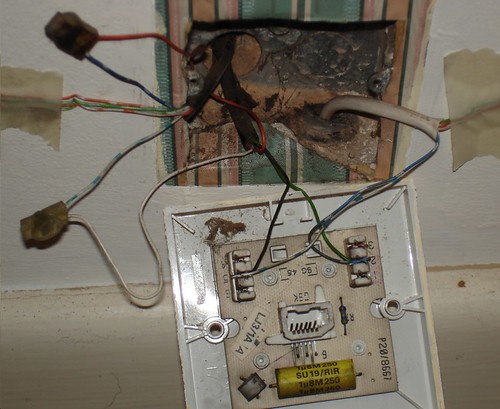I realise that nobody other than BT can modify the master socket, but the pic below shows how my old-style socket is wired up.
I have just moved into a new house and just want to get an understanding of how the phone sockets are set up.
Does this look like official BT wiring? I think the previous owner may have added wiring to this!
Thanks in advance,
Paul.

I have just moved into a new house and just want to get an understanding of how the phone sockets are set up.
Does this look like official BT wiring? I think the previous owner may have added wiring to this!
Thanks in advance,
Paul.



